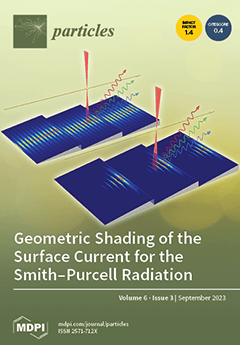Open AccessCommunication
Amplitude and Phase Control of RF Pulse Using IQ Modulator to Improve Electron Beam Quality
by
Shimon Yamada, Shigeru Kashiwagi, Ikuro Nagasawa, Ken-ichi Nanbu, Toshiya Muto, Ken Takahashi, Ken Kanomata, Kotaro Shibata, Fujio Hinode, Sadao Miura, Hiroki Yamada, Kohei Kumagai and Hiroyuki Hama
Viewed by 1752
Abstract
A test-Accelerator as Coherent Terahertz Source (t-ACTS) has been under development at Tohoku University, in which an intense coherent terahertz radiation is generated from the short electron bunches. Velocity bunching scheme in a traveling wave accelerating structure is employed to generate the short
[...] Read more.
A test-Accelerator as Coherent Terahertz Source (t-ACTS) has been under development at Tohoku University, in which an intense coherent terahertz radiation is generated from the short electron bunches. Velocity bunching scheme in a traveling wave accelerating structure is employed to generate the short electron bunches. The in-phase and quadrature (IQ) modulator and demodulator were installed to the low-level RF systems of t-ACTS linac to control and measure the amplitude and phase of RF power. The amplitude and phase of the RF power applied to an RF electron gun cavities and the accelerating structure are controlled to produce the electron bunches with a uniform and small momentum spread suitable for the velocity bunching. By installing the feed-forward control system using IQ modulators for the beam conditioning, we have successfully generated flat RF pulses and improved beam quality, including the energy spectrum of the beam. The details of feed-forward control system of the amplitude and phase using the IQ modulator and the beam experiments are presented in this paper.
Full article
►▼
Show Figures





